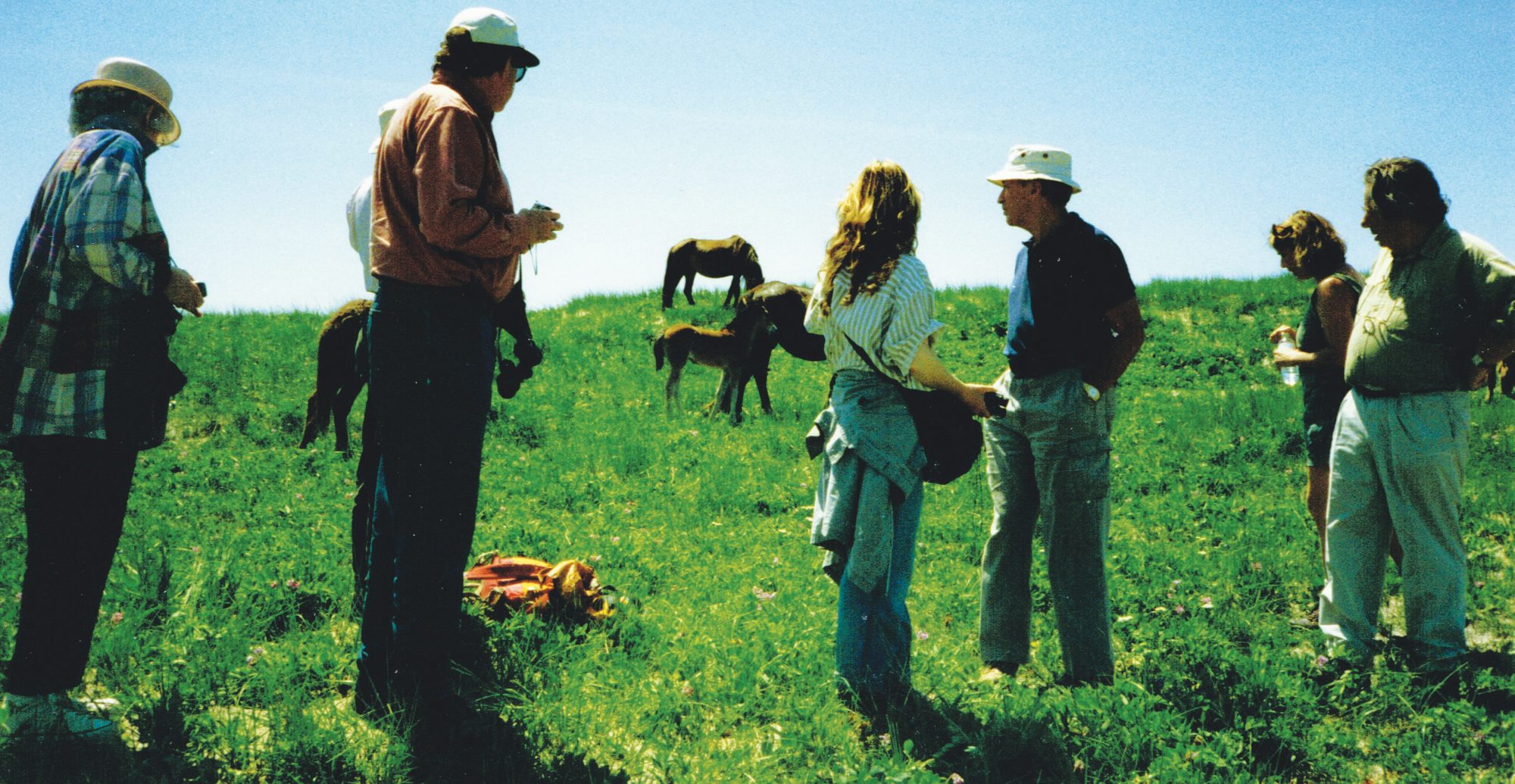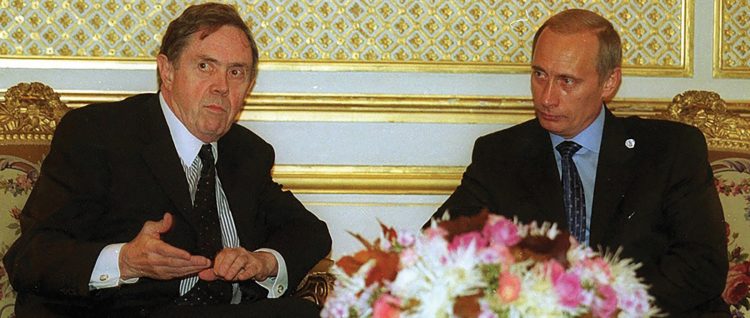Better Than Good Enough

As secretary general of the Organisation for Economic Development and Cooperation (OECD), Don Johnston saw Canada as a nation among nations. As a longtime Liberal cabinet minister under Pierre Trudeau, he saw the country in ways most people never do. The Canadian idea, Johnston writes, requires perspective to get right. But it does include some fundamental truths.
Donald J. Johnston
Trying to capture the Canadian idea reminds me of the famous Indian parable of a group of blind men attempting to describe an elephant with each touching a different part of the beast; one the side, one a tusk, one the trunk, another the tail etc. Each then describes the whole elephant based on their own limited experience. It is not surprising that each describes a totally different animal than the reality.
Of Canada, a country of elephantine proportions, many of us have impressions of particular regions, cities and people, but very few know it in much detail from sea to sea to sea. With some exceptions, most Canadians of my generation could be likened to blind men describing an elephant. At the same time, many academics, students, journalists, workers in national businesses, in government bureaucracies, in the military and the RCMP, to name a few, do have opportunities not only to work in many areas of Canada, but to live in them. Even with the distance-obliterating power of the internet, it’s day-to-day living that gives one a true sense of people, their values and cultures.
No doubt that the average Canadian knowledge base has expanded greatly since my birth in 1936 on a small dairy farm in eastern Ontario. That was before the introduction and expansion of radio, television, the internet and routine air travel.

Those of us who have been members of Parliament and ministers at the federal level are especially fortunate, enjoying opportunities in the course of our work to establish networks of people in all walks of life across this vast and physically beautiful country. These opportunities are not available to many Canadians. I campaigned during my 10-year career as an elected politician in many urban communities in all provinces. To that, I add my travels across the country for four years as president of the federal Liberal Party. To my regret, I’ve never campaigned in, nor even visited the great North, except for a bit of Ungava in Quebec. However, campaigning and conferences are not a substitute for even temporarily living somewhere.
Despite the desire and opportunities we may have, few of us have touched enough parts and elements of Canada to fully appreciate its richness in beauty, resources and peoples, although we should each do better than the blind men in the parable.
Travel is one gateway to greater perspective on the parts of the whole. In early 1994, I was in Ottawa with my wife Heather, former Prime Minister Pierre Trudeau, author Mordecai Richler and his wife, Florence, journalist E. Kaye Fulton and my former senior aide Elizabeth Dickson, celebrating the opening of Parliament and the new Liberal government of Jean Chrétien.
After a small reception, we chatted over dinner, discussing the great beauty of Canada and wondering which areas none of us had ever seen, and which we could travel to as a group. Trudeau had the greatest grasp of the places and peoples. What place could we name where he, nor the rest of us, had been? Kaye and I suggested Sable Island, the massive sand bar off our East Coast known as the graveyard of the Atlantic because of its status as the cause of so many shipwrecks over the centuries.
Why Sable? Because some years earlier when I was in Trudeau’s cabinet and Kaye was based in Halifax, I invited her to come with me by helicopter to an Oil Rig anchored on the Grand Banks. All of us had memories of the tragedy of the Ocean Ranger of 1982 and we wished to see what life was really like on such a rig. As we passed over Sable, we saw beaches covered with harbour seals, huge white sharks lurking offshore waiting for dinner and the famous ponies gamboling in the sand dunes. We thought it would be interesting to visit some day.
As it turned out, not even Pierre had been on Sable. Our destination was set. Elizabeth was commissioned to get the necessary permission from the federal government to visit Sable and I was mandated to organize transportation, which could only be by private air charter. The plan came together and we arrived by private plane from Halifax, landing on a hard sand beach the morning of July 4th, 1994.
It was a beautiful, even magical, sunny summer day thoroughly enjoyed by all, with Pierre even trying to cozy up to a pony with a handful of goodies, which was strictly forbidden. Elizabeth and Kaye took many photos, which I have mounted because they are a small part—one elephant section—of my notion of physical Canada, with its diversity and physical beauty.
After retiring from active politics, I spent 10 years living in Paris and traveling to many other countries because of my international responsibilities as secretary general of the Organisation for Economic Cooperation and Development (OECD). Almost every country has extraordinary beauty and important resources, but most suffer from widening inequality. A glaring example is our neighbour, the United States, where income and wealth disparities continue to widen. I find comparisons help to describe the Canadian idea.

Nobel Prize winner Joe Stiglitz identified the society-wide negative impacts of this growing problem in his book The Price of Inequality: How Today’s Divided Society Endangers Our Future. He writes that “politics have shaped the market, and shaped it in ways that advantage the top at the expense of the rest.” He also says, “By 2007 the average after-tax income of the top 1 percent had reached $1.3 million, but that of the bottom 20 percent amounted to only $17,800. The top 1 percent get in one week 40 percent more than the bottom 20 percent receive in a year.”
And that trend continues. See Table 1 for some statistics from the World Economic Forum’s Inclusive Development Index for 2018 which apply the widely used Gini coefficient to comparative income and wealth.
Certainly, Canada has challenges of governance, as does every country. But I would rather have ours than those of the U.S., where even the federal electoral system is a shambles. Looking at Canada from the vantage point of the OECD, I always felt pride in being a Canadian, but also very grateful. We have our challenges—economic and social—but there is no area where I would trade places with Americans. In making comparisons, I’m reminded of Chrétien’s quip when he was running for the leadership of the Liberal Party:
Quand je me regarde je me désole
Quand je me compare je me console.
Canadians who express envy of the American way should take that saying to heart.
When I travelled extensively as head of the OECD, I saw Canadian flags on luggage and back packs everywhere. Some suggested they were a shield against being mistaken for an American. I disagreed. They were proud to be Canadians, as I am.
Why are we proud? Because of the breadth of the Canadian idea. It’s not just because we enjoy a physically beautiful country, as so much of the planet does. We had no hand in that.
It’s more because Canada is generous and welcoming to immigrants, whether the famished Irish immigrants of the mid-19th century, the Vietnamese boat people of the late 20th century or the recent Syrian refugees. (Nonetheless, there have been some shameful policy exceptions such as the “None is too many” tragedy, when Jewish immigrants trying to escape the holocaust were turned away). It’s because French and English Canadians fought valiantly together in both 20th century World Wars to defend our common values and to defeat both the Kaiser and Hitler. It’s because Canada has overcome linguistic and cultural differences to unite English-speaking and French- speaking peoples in a peacefully enduring federation despite efforts by separatists to create an independent Quebec. It’s because Canada has developed excellent and equitable education and health systems. Americans look at us with envy in both fields. It’s because Canada has built one of the most successful societies in history, having drawn upon the incredible success of the best of capitalism and concomitant wealth creation, with the importance of income and wealth distribution being in equitable balance. The latter remains a work in progress, but it is far better than in the United States.
New Yorker writer, author of the newly released book A Thousand Small Sanities: The Moral Adventure of Liberalism and transplanted Canadian Adam Gopnik writes: “The truth is that Canada is a model liberal nation—meaning that it’s a nation built on the two founding liberal premises. First, that good enough is good enough, that sustaining social sympathy, even if it means accepting a permanently imperfect existence, counts for more than Utopian schemes. Second, that compromise and conciliation are not weak words pointing toward a mediocre centre, but magical words pointing toward semi-miraculous consequences: sustained social peace and prosperity and successful pluralism.”
Gopnik has perhaps captured in one paragraph the essence of the Canadian idea without describing each part of the elephant.
Donald Johnston is a former Liberal federal cabinet Minister; former Secretary General of the OECD; founding Director and former Chair of the International Risk Governance Council (IRGC) and Chair Emeritus of the McCall MacBain Foundation, Geneva.
